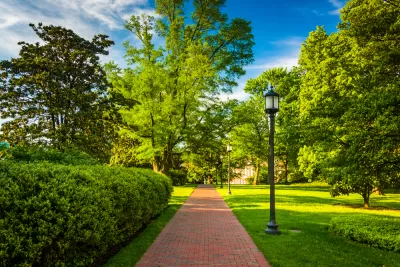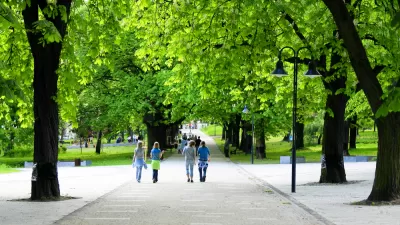A movement to plant small patches of plants in urban neighborhoods is taking off in Europe and Asia as cities work to mitigate the effects of climate change and provide increased access to green space.

The newest trend in urban forestry: micro-forests. The tiny, neighborhood-scale patches of native trees are proliferating in cities around the world, writes Elizabeth Hewitt in National Geographic. In the 1970s, Japanese botanist Akira Miyawaki "pioneered a method of planting young indigenous species close together to quickly regenerate forests on degraded land."
Now, "[i]n Europe, India, and other countries, communities are creating small-footprint, native forests as hyperlocal responses to large-scale environmental challenges." In the Netherlands, IVN Nature Education has led an effort to plant 144 "tiny forests" to date. "Public projects, which IVN coordinates with a local school, community members and a municipality, usually range between 200 and 250 square meters—roughly equivalent to a tennis court."
The project also encourages private backyard forests, which can be as small as six square meters. "Daan Bleichrodt, who launched IVN’s Tiny Forest initiative with the goal of making nature more accessible to children, said he thinks they are popular because people are becoming more aware of major environmental challenges." And while "tiny plots of trees alone will not solve climate change," "[p]reliminary carbon sequestration data shows that the Tiny Forest planting method is on par with other forms of reforestation in the Netherlands. Wageningen researchers found, on average, that each sequestered about 127.5 kilograms of carbon in 2020."
But while nature-based solutions "can’t substitute decarbonizing the economy," says Cécile Girardin, of Oxford University’s Nature-Based Solutions Initiative, but they can have positive impacts on things like urban cooling, water regulation, and biodiversity.
FULL STORY: Why ‘tiny forests’ are popping up in big cities

Trump Administration Could Effectively End Housing Voucher Program
Federal officials are eyeing major cuts to the Section 8 program that helps millions of low-income households pay rent.

Planetizen Federal Action Tracker
A weekly monitor of how Trump’s orders and actions are impacting planners and planning in America.

Ken Jennings Launches Transit Web Series
The Jeopardy champ wants you to ride public transit.

California Invests Additional $5M in Electric School Buses
The state wants to electrify all of its school bus fleets by 2035.

Austin Launches $2M Homelessness Prevention Fund
A new grant program from the city’s Homeless Strategy Office will fund rental assistance and supportive services.

Alabama School Forestry Initiative Brings Trees to Schoolyards
Trees can improve physical and mental health for students and commnity members.
Urban Design for Planners 1: Software Tools
This six-course series explores essential urban design concepts using open source software and equips planners with the tools they need to participate fully in the urban design process.
Planning for Universal Design
Learn the tools for implementing Universal Design in planning regulations.
Ada County Highway District
Clanton & Associates, Inc.
Jessamine County Fiscal Court
Institute for Housing and Urban Development Studies (IHS)
City of Grandview
Harvard GSD Executive Education
Toledo-Lucas County Plan Commissions
Salt Lake City
NYU Wagner Graduate School of Public Service




























